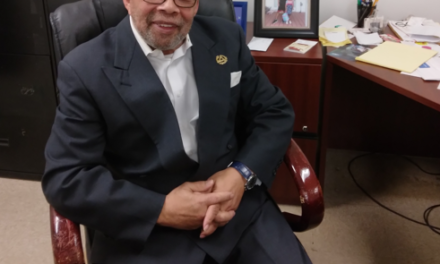Renowned educator Dr. Ryan Smith brings 25 years of extensive expertise to education. His interest in teaching started during his academic years in San Diego, where he crossed paths with St. Marys’ College basketball coach Randy Bennett.
Since that fateful encounter, his career trajectory has seen him rise to various leadership positions, including Superintendent of the Monrovia Unified School District and Assistant Superintendent for the Paramount Unified School District. His core competencies range from strategic planning and communications to labor relations, budgeting, and ensuring the safety of all school communities. His leadership philosophy places students’ needs at the forefront of all decisions. His relentless pursuit of high-quality education for all has seen him pioneer numerous
student-centric initiatives throughout his career.
His leadership resulted in Monrovia USD being ranked among the nation’s top 1,000 school districts by Nich. Additionally, his efforts resulted in each elementary and middle school receiving commendations for exceptional PBIS implementation and advanced placement programming and Monrovia High School receiving AP Honor Roll recognition.
Dr. Smith actively participates in professional development, sharing his expertise at
conferences and seminars on a variety of topics including educational equity, project-
based learning, and crisis management. Moreover, he’s a distinguished member of prominent professional organizations, including the American Association of School Administrators and the Association of California School Administrators.
Armed with a Doctor of Education degree in K-12 Educational Leadership from the University of Southern California, a Master of Arts in Educational Leadership andAdministration from Chapman University, and a Bachelor of Science in Mathematics from California State University, San Marcos, Dr. Smith’s exhaustive experience and commitment to student-focused leadership perpetuates his influential impact on the
education sector.
What inspired you to explore the integration of artificial intelligence (AI)
into the school district’s human resources strategy, particularly in
alignment with their mission, vision, and core values?
My inspiration to explore AI integration into the school district’s human resources strategy stems from recognizing its transformative potential. Over the years, I’ve witnessed AI’s power across various sectors, and it became evident that
education could benefit significantly. We can optimize HR processes by aligning AI with an organization’s mission, vision, and core values while staying true to our educational goals. This alignment ensures that technology serves as a tool to empower educators, streamline operations, and ultimately enhance student success. It’s about leveraging AI’s capabilities to create a more efficient and effective educational ecosystem that prioritizes the needs of students and
educators alike.
Could you elaborate on the key takeaways from your recent attendance at The American Association of School Administrators (AASA) annual National Conference on Education regarding AI’s potential in educational
settings?
Attending The American Association of School Administrators (AASA) annual National Conference on Education provided invaluable insights into AI’s potential in educational settings. The discussions highlighted AI’s role not as a threat but as a valuable tool for productivity enhancement and student achievement. From streamlining administrative tasks to facilitating personalized learning experiences, AI offers many opportunities to revolutionize education positively. Understanding AI’s positive impact is crucial in dispelling misconceptions and
fostering integration into educational practices.
How do you envision AI simplifying the recruitment process by crafting
strategic interview questions that align with an organization’s mission,
vision, and core values based on your experience as Superintendent of the
Monrovia Unified School District?
Utilizing AI to simplify recruitment by crafting strategic interview questions aligned with an organization’s mission, vision, and core values excites me. Drawing from my experiences as Superintendent of the Monrovia Unified School District, I can see how AI-powered processes can streamline candidate selection and ensure alignment with our district’s goals. By leveraging AI to generate insightful questions, education leaders can identify candidates who possess the necessary qualifications and resonate with their organization’s ethos.
Can you share specific examples of how AI-powered processes can
improve recruitment practices within educational leadership roles, as you
mentioned based upon your experiences, including your tenure as
Superintendent of Monrovia USD?
When I was Superintendent in Monrovia USD, I led the process to revise the district’s mission and vision statements and create a set of core values. These are all foundational principles that guide every school district and in Monrovia,
guided the strategic plan that we developed. One of the challenges that district human resources teams and educational leaders often have is identifying candidates for positions who truly believe in a district’s mission and vision and
embody its core values. AI can help with this. For example, AI can be used to generate interview questions tailored to a district’s mission, vision, and values. This streamlines the candidate selection process, enabling leaders to identify individuals who meet the job requirements and align with the organizational culture. By using AI, leaders can make more informed decisions that ultimately benefit their students and staff.
You mentioned that AI-powered processes can create grading rubrics for
interview responses. How do you believe this streamlines the selection
process and enhances decision-making for recruitment teams?
The introduction of grading rubrics for interview responses, facilitated by AI, represents a significant advancement in the recruitment process. By standardizing the evaluation criteria, AI can help to ensure consistency and objectivity in candidate assessment. This streamlines the decision-making process for recruitment teams and ensures alignment with organizational values and expectations. By leveraging AI to generate grading rubrics, school districts can make more informed selections that support their mission and goals.
In what other ways do you foresee AI contributing to HR operations beyond
recruitment, particularly in the onboarding process and personalized
training plans for new employees?
Beyond recruitment, AI holds immense potential in optimizing various aspects of HR operations, including onboarding and training. School districts can enhance employee effectiveness and job satisfaction by leveraging AI to personalize
training plans based on employee skill sets and goals. This saves time and resources and ensures that new hires are equipped with the necessary tools and knowledge to contribute effectively to the organization. By embracing AI in HR
operations, school districts can create more efficient and supportive environments that empower employees to thrive.
How can AI support performance evaluations in educational settings, and
what benefits do you believe this brings to professional development
opportunities for educators?
AI-supported performance evaluations offer valuable insights into employee strengths and areas for growth, facilitating targeted professional development opportunities. AI can identify trends and patterns that inform personalized
development plans tailored to individual needs by analyzing performance data. This enhances educator effectiveness and job satisfaction while ultimately benefiting student outcomes. By leveraging AI in performance evaluations, school districts can create more data-driven and effective professional development programs that support continuous growth and improvement.
You highlighted the potential for AI to address biases in recruitment processes and support diversity and inclusion efforts. Can you provide insights into how AI achieves this and its significance for creating more equitable workplaces in school districts?
AI has immense potential to address recruitment bias and promote diversity and inclusion within school districts. By analyzing data and identifying patterns, AI can help mitigate unconscious biases and ensure fair and equitable treatment of all candidates. This not only enhances the diversity of the workforce but also fosters a more inclusive organizational culture. By using AI in recruitment, school districts can create more diverse and representative workforces that better reflect the communities they serve.
Beyond HR functions, where else do you see AI revolutionizing the
education sector, such as personalized learning, data analysis, and
predicting student success?
Beyond HR, AI has the potential to revolutionize education in numerous ways, including personalized learning, data analysis, and predicting student success.By analyzing vast amounts of data, AI can identify individual learning needs and
tailor instruction to meet students where they are. This promotes greater engagement and academic success for all students. Additionally, I believe AI can analyze student performance data to identify trends and patterns that inform
targeted interventions and curriculum development. By leveraging AI in education, school districts can create more dynamic and responsive learning environments that prepare students for success in the 21st century.
As you mentioned, the ethical use of AI is crucial. What steps do you
believe school districts should take to ensure AI systems are used
responsibly, with a focus on equity and inclusivity?
Ethical use of AI is crucial in education, as it ensures that technology serves the best interests of students and educators. School districts must implement measures to monitor and evaluate AI systems continually, preventing biased or discriminatory outcomes. This includes regular audits, transparency in decision-making processes, and ongoing staff training. By prioritizing ethics and accountability in AI usage, school districts can ensure that technology enhances,
rather than detracts from, the educational experience.












